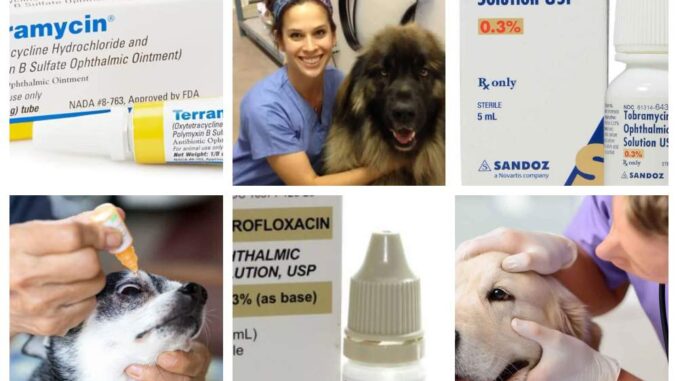
This article was updated on March 29th, 2023
Eye infections in dogs are one of the most common issues in my veterinary clinic. I see a dog squinting or rubbing his eyes at least once a day. Attempting to treat eye infections at home is dangerous. And It would be best never to put anything in your dog’s eye without checking with your veterinarian. Read on to learn the pros and cons of common antibiotics used to fight eye infections in dogs. This article will also discuss what you can do at home to help keep your dog comfortable while waiting to see the vet.

Should I give antibiotics and medications to fight eye infections in dogs?
You should never put any antibiotic or medication in your dog’s eye without checking with your vet first. Putting over-the-counter medications or drop in your dog’s eyes could worsen pain or infection. However, you can do a few things to keep your dog comfortable while waiting to see the vet, you can try the following:
1. Flush the eyes with a saline-based solution:
Dogs with eye infections can have thick crusts in or around their eyes. Eye flushes are excellent for clearing eye crust and debris, making your dog able to see and blink easier. They can also soothe eyes that are red and irritated. Most dogs with eye problems will enjoy a good eye flushing.
2. Apply a hydrating eye drop to the eyes:
Dogs with eye infections can have redness, dryness, and irritation. Hydrating drops soothe the eyes and make your dog more comfortable.
3. Put an e-collar on your dog:
E-collars are great for preventing your dog from scratching at his eyes, which can worsen irritation and infection. You can purchase an e-collar at your vet or local pet supply store. Just make sure you have a proper fit. E-collars should extend a couple inches past your dog’s nose. Make sure there’s at least a two finger width gap between your dogs neck and the e-collar.
Best antibiotics to fight eye infection in dogs
Your vet can determine the best antibiotic to treat your dog’s eye infection. However, knowing about the different antibiotics used to treat eye infections is helpful. The most commonly used antibiotic for eye infections in dogs are:
1. Terramycin:
Terramycin is a prescription antibiotic used to treat eye infections caused by bacteria in dogs. This antibiotic works by preventing the bacteria from reproducing. It is best for infections caused by bacteria called E. histolytica and E.coli. Terramycin is my go-to antibiotic for treating eye infections because it stays in the eye for up to 12 hours after administration, making it a very effective antibiotic for treating eye infections (conjunctivitis). Terramycin doesn’t usually cause any side effects. However, dogs with sensitivity to this antibiotic may experience the following:
- Nausea
- Vomiting
- Change in tooth color
- Liver and kidney damage
- Stomach problems
While Terramycin is an effective antibiotic, it may interact with other medications or supplements. Let your vet know if your dog is taking any of the following medications:
- Digoxin
- Any other antibiotic
- Anticoagulants (Blood Thinners)
- Aminolevulinic acid
- Methoxyflurane
- Systemic retinoids
- Medication or supplements containing strontium ranelate
- Certain multivitamins
2. Ciprofloxacin:
This broad-spectrum antibiotic can kill a wide-range of bacteria. Ciprofloxacin treats conjunctivitis and Keratitis. Most dogs will not react to this medication. However, it is more likely to cause side effects. Some dogs may experience the following:
- Eye pain
- Redness
- Itching tearing
- Blurry vision
- Bad taste in the mouth
- Allergic reaction difficulty breathing
- Cloudy eyes
You should contact a vet if your dog experiences any of the symptoms above.
3. Tobramycin:
Tobramycin is used to treat a wide variety of bacterial infections in dogs and is commonly used to treat eye infections. It works by preventing bacteria from multiplying. Tobramycin is pretty safe; however, some dogs may experience the following:
- Hypersensitivity,
- Burning,
- Stinging,
- Eyelid swelling or itching,
- Conjunctival erythema (eye redness).
Overall, the benefits of Tobramycin outweigh the risks. The most important thing you should know about Tobramycin for dogs and cats is its power to relieve external eye bacterial infections, protect pets’ eyes during the healing process, and show eventual improvement in condition and suffering.
What are the best medications or eye drops to fight eye infections in dogs?
Eye infections are serious and need prompt treatment. If an eye issue goes too long without treatment, it could end up causing severe pain or blindness. However, some eye products can help keep your dog comfortable while waiting to see the vet. The following products are safe to use in your dog’s eyes:
1. I-Drop Hydrating Eye Drops:
Eye drops moisturize the eye, preventing further irritation, rubbing, and infection. They work by mimicking healthy tear production when your dog blinks. I-Drop-Plus drops provide long-lasting hydration, which soothes the eyes. Note: Do not use human eye drops on your dog. We only recommend products that are proven safe for dogs.
2. Akorn saline eye wash:
We use saline solution in our practice daily. If a dog has a nasty infection, we will send saline solution home so the owner can flush the eyes daily before medicating the eye. Flushing the eyes with saline helps eliminate discharge and debris in and around the eye. Saline solution is soothing, and most dogs enjoy having their eyes flushed. The saline flushes debris and irritants from your dog’s eyes while relieving irritation and burning.
This eye flush is safe to use 2-3 times a day. But remember, saline eye wash will not do anything to treat eye infections, conjunctivitis, or cataracts.
For more information on veterinary-approved eye drops for dogs take a look at our article Best Dog Eye Drops for Eye Infections.
How do I pick the best medications, eye drops, or antibiotics for my dog’s eye infection?
Knowing which eye drops to use for an eye infection is only possible by seeing a veterinarian. Your veterinarian must rule out other eye problems before diagnosing your dog with an eye infection. Your vet will test your dog’s eyes and provide medication according to their findings.
For more information, read our article: How to treat dog eye infections.
Best medication for preventing future dog eye infections?
The majority of eye infections occur after an eye injury. Usually, a dog will scratch their eye after an injury or contact with an allergen. The best way to prevent eye infection is to:
- Keep allergies under control by giving them a veterinary-prescribed allergy medication, and keeping them away from known allergens. You may have to keep your dog indoors and away from pollen, molds, and dust.
- Prevent your dog from scratching at his eye by putting an e-collar on them.
- Prevent your dog from playing rough with other dogs or cats.
- Keep your dogs facial hair well groomed and out of the eyes.
Types of eye infections commonly seen in dogs
1. Conjunctivitis:
Conjunctivitis, also is referred to as pink eye, is an itchy inflammation of tissue in the outer part of the eye called the conjunctiva. It is usually caused by allergies or a scratch on the eye.
2. Uveitis:
Uveitis happens when the inner part of the eye becomes inflamed. It is usually caused by trauma to the eye.
3. Corneal inflammation:
Corneal inflammation happens when a dog scratches the eye, eventually inflammation will occur, allowing bacteria to enter the scratch and into the cornea. It is usually caused by trauma to the eye or allergies.
4. Eyelid and tear gland issues:
When a dog’s tear glands don’t produce enough tears to keep the eye moist, infection can occur. A certain level of moisture is necessary to keep the eyes healthy. A dog with dry eyes will scratch and rub at their eyes, causing infection. Dry eyes can also be caused by:
- Canine distemper
- Medications containing sulphonamides
- Hypothyroidism
- Nervous system problems
For more info, you can check out our pictures of common eye infections in dogs.
How is conjunctivitis diagnosed?
The process of diagnosing conjunctivitis is straightforward. Your vet will do an eye exam. During the eye exam, your vet will check for signs of infection and inflammation. They may also run the following tests:
Tear production test (Schirmer eye test)
The schirmer eye test will determine if your dog’s tear glands produce enough tears. During this test, your vet will insert a small piece of paper into the corner of your dog’s eye. The paper has a little line on it. If your dog has an average amount of tears, his tears will absorb at or beyond the line. If your dog has dry eye, tears will fill below the line.
Fluorescein stain:
During this test, your vet will put green fluorescent drops into your dog’s eye and shine a black light on it to see if they can find a scratch on the eye.
What is the best treatment for eye infections in dogs?
The best treatment for an eye infection in dogs depends on the cause of the irritation. Therefore, treatment begins with an exam to determine what caused the condition. The most common causes of eye infections in dogs are:
- Injury
- Irritants in the eye like debris or hair.
- Allergies
If your dog has an injury with a bacterial infection, your vet may recommend the following:
- Steroids: To help heal the damage to the eye.
- Antibiotics: To prevent bacteria from growing in the eye.
If tear production issues are the cause, your dog’s infection may need medications to stimulate tear production. Common medications used to stimulate tear production are:
- Cyclosporine
- Tacrolimus
Lastly, dogs with infections caused by hair irritating the eye may require surgery to remove the hair follicles causing hair to grow into the eye.
How do I give my dog eye drops?
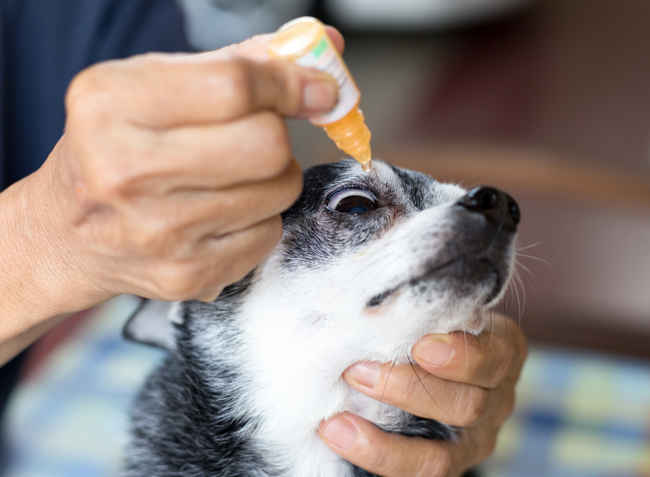
Giving your dog eye medication without getting it everywhere can be challenging. Many dogs will try to run away or pull their head away from you.
Follow these steps for an easy way to apply drops or ointment to your dog’s eye:
1. Place your dog with his head facing away from you and nose pointing towards the ceiling.
2. With one hand, open his eye, and with the other, squeeze the ointment or drops into his eye. You can use one hand to open the lower part of his eye and the other to open the upper part.
3. Gently squeeze the tube of eye ointment and run it across the eye. Apply drops directly into the eye.
Note: If your dog has more than one eye medication, you’ll want to apply liquid first, then ointment. If you apply the ointment first, it will be rinsed off the eye when you use a liquid medication. Also, you should wait 10 minutes after applying the first medication before applying the second.
Please see the video here for a demo on how to apply eye medication:
Frequently asked questions
Can a dog’s eye infection go away on its own?
A dog’s eye infection might go away without treatment. However, eye problems can cause permanent vision loss and pain. Eye infections can also be a symptom of more serious disease like lymphoma (cancer of the blood). Having a vet look at your dog’s eye is best. Your vet can determine If your dog’s eye problem will go away with or without treatment.
Can I use human eye drops on my dog?
Human and dog eyes are alike, and it may be tempting to use over-the-counter medicated drops on your dog. However, using anything your vet has yet to approve is not a good idea. With that said, it is ok to flush your dog’s eye with a gentle saline eye wash in cases of mild eye irritation.
Can I treat an eye infection naturally?
It is not a good idea to attempt the treatment of an eye infection naturally. Eye infections can become very serious and cause permanent blindness or extreme pain. It is best to visit your vet first and ask if there is anything they would recommend based on your dog’s specific eye problem.
How long does conjunctivitis last in dogs with antibiotics?
After proper diagnoses and consistent medication application, most eye infections (conjunctivitis) will heal within 3 weeks.
Related posts about dog eye infections:

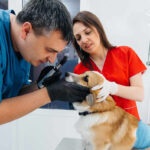
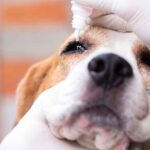
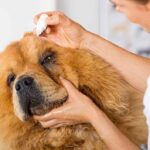
Disclaimer: This website's content is not a substitute for veterinary care. Always consult with your veterinarian for healthcare decisions. Read More.

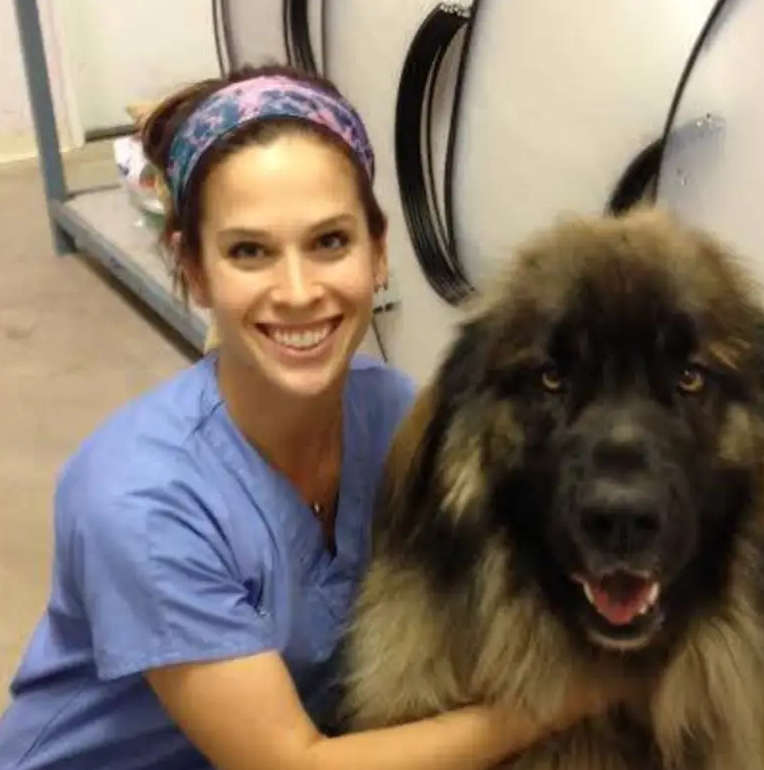


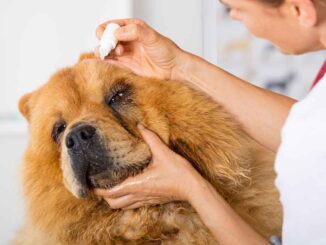
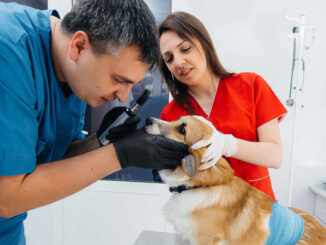

Be the first to comment